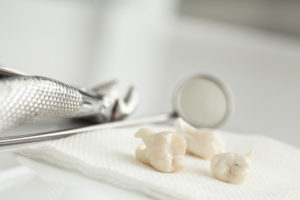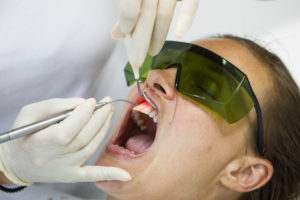
Fractures are a common occurrence in the world of dentistry. Fractures or cracks can occur at any age and can be very painful, hard to diagnose, yet sometimes easy to treat. There are several types of fractures, that you may not have been aware of.
One type of crack is known as an oblique supragingival fracture. This fracture is found above the gums, and normally happens when you bite down too hard on something. Normally, this fracture doesn’t involve the nerve. Once the fractured area of the tooth breaks off, the pain will go away. Although the exposed dentin (part of the tooth under the enamel) may cause you some pain. To fix this, you should visit the dentist to have it repaired. If the fracture is large, you may need to have a crown placed on the tooth to prevent further fractures from occurring in that tooth.
Another type of fracture exceeds way below the gum line and is known as an oblique subgingival fracture. Once the fractured piece of tooth breaks off, it normally remains attached to the gums and cause result in terrible pain until you get it removed. Once you have had the piece of tooth removed from the gums, the tooth will be similar to the supragingival fracture. It normally doesn’t affect the nerves, but you may need to have a root canal to clean out the tooth before having a crown put on it.
Vertical apical root fractures are one of the most difficult to deal with. This fracture starts at the tip of the root and can cause you severe to intense pain, even if you’ve had the nerve removed with a root canal. Even though the nerve may not be present, vertical apical root fractures cause a lot of pain, which occurs in the tooth.
Even though fractures are common and very painful, you should never put off going to the dentist. Fractures can become more and more serious if you don’t try to get help. Your dentist will be able to diagnose the problem and fix it before it has the chance to get any worse.


